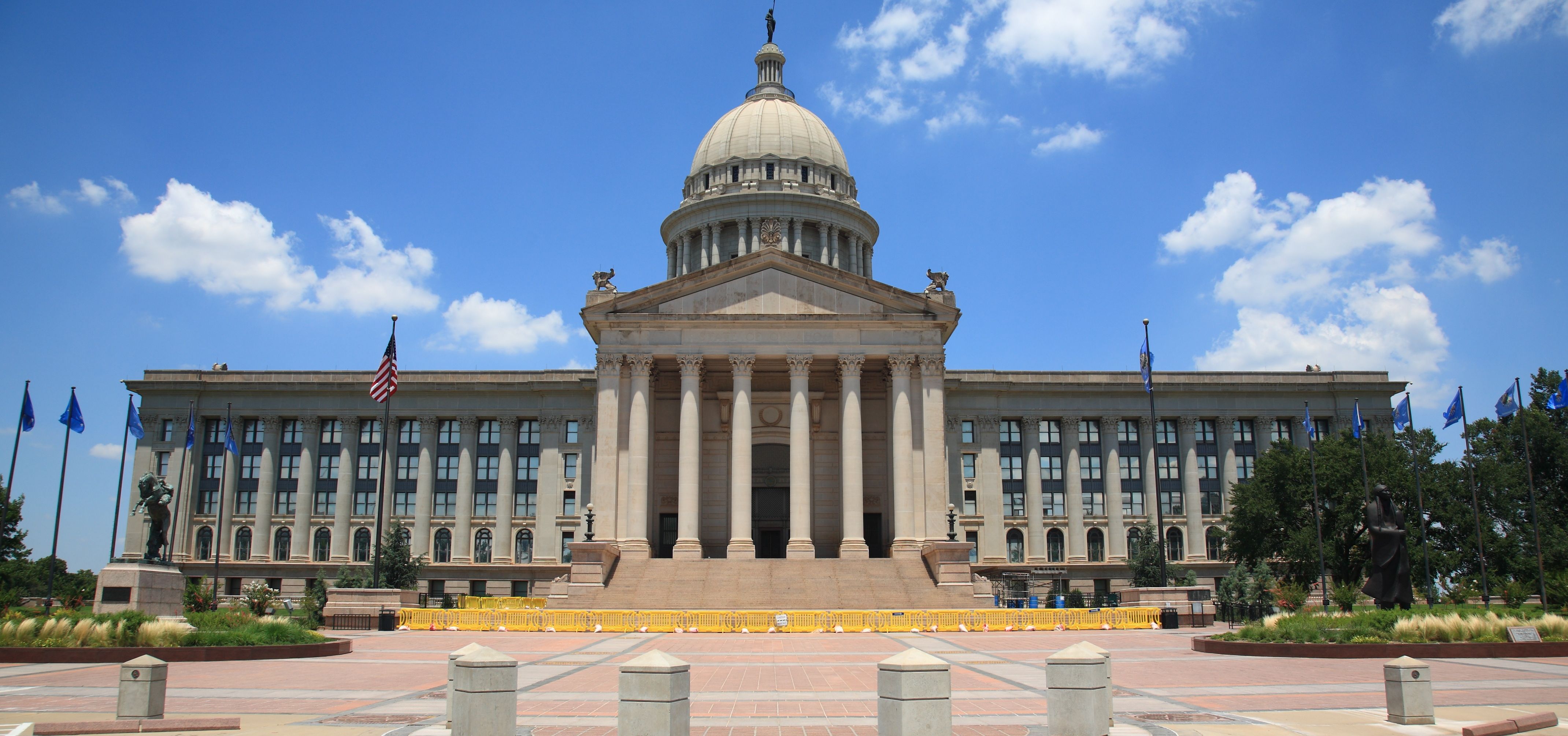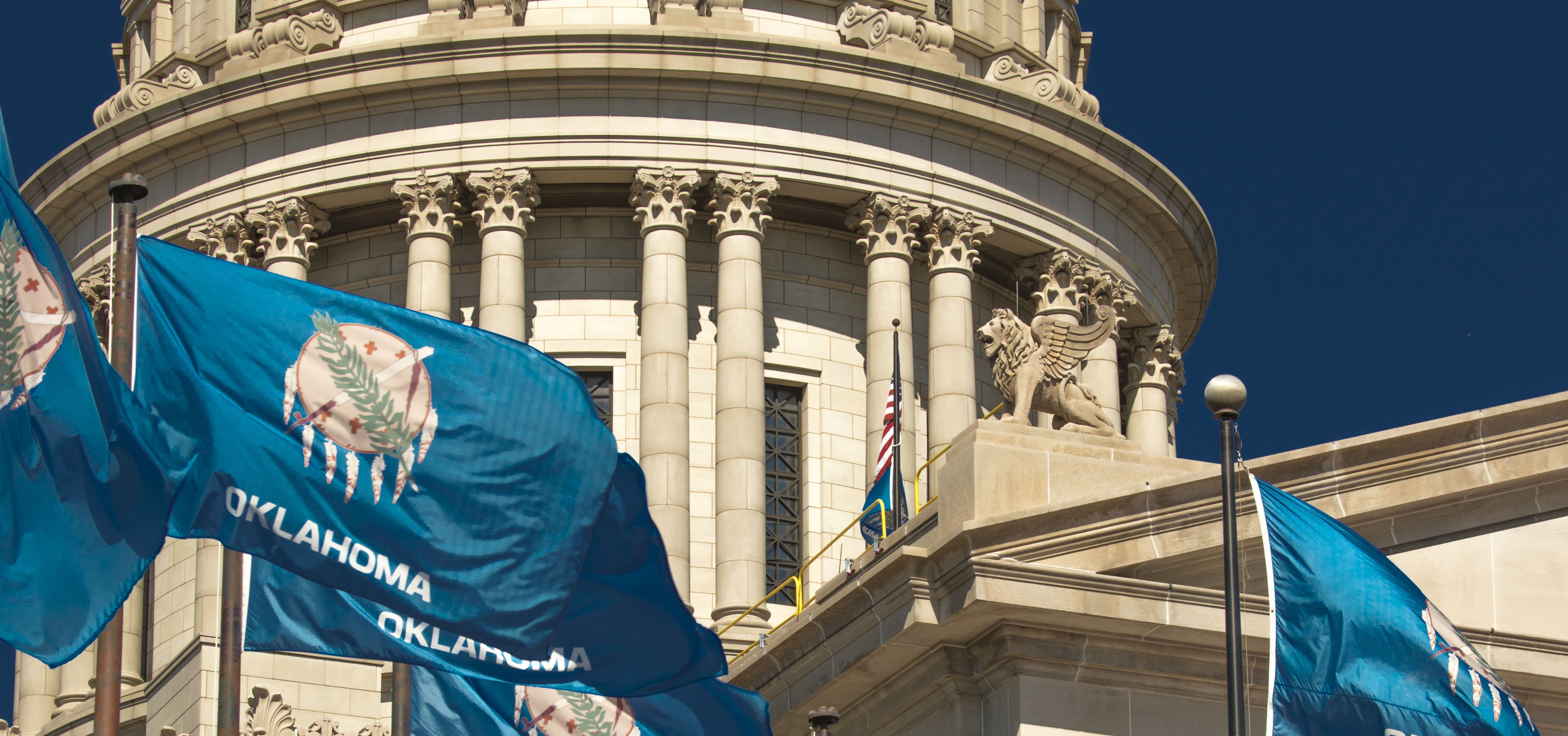Learn about Oklahoma Utility Securitization Bonds including our News & Press Releases and Team.
Talk to us
Have questions? Reach out to us directly.
Learn about Oklahoma Utility Securitization Bonds including our News & Press Releases and Team.
About Oklahoma Utility Securitization Bonds
- Created
- 1974
- Estimated Bonds to Be Issued
- $4.5 Billion
- Bond Ratings
- TBA
The Legislature Adopted Senate Bill 1050 providing the framework for the Oklahoma Corporation Commission (OCC) to authorize a utility to collect an irrevocable Securitization charge and issue Bonds to finance the fuel costs experienced due to the extreme cold in February of 2021. Regulated utilities may file for a financing order from the OCC. The OCC evaluates the filing and determines whether Securitization is the best solution for ratepayers to finance the costs incurred due to the extreme cold. If the OCC audits and approves the fuel charges from the storm and if the OCC also determines that Securitization is the best solution for ratepayers, those charges are marketed to private investors through a security bond process that ODFA oversees.
Image Gallery




News
Regulated Oklahoma utilities are considering returning to an old-school way of buying fuel used to support power generating needs, potentially protecting customers from the types of astronomical price spikes seen in recent extreme winter weather.
At least during winter months, utilities are considering a move away from the current practice of paying for fuel based upon daily spot prices, to one where fixed prices are used for the entire month.
That could smooth some short-lived cost spikes, like the one between Feb. 10 and 15. During that week, natural gas values on daily spot markets climbed 28,574.5% and wholesale electricity costs followed suit, utility officials said.
Those additional costs eventually get passed to customers. Utility companies and state regulators are currently grappling with ways to recover some costs from that storm, which will likely cost Oklahomans in excess of $4.5 billion. If prices had been set for the duration of the month, consumers might not now be facing larger bills for the next decade-plus.
But setting one price for the month could leave customers paying more during months where daily fuel costs dip below the agreed-upon monthly rate.
Utility representatives discussed that issue and others with members of the Oklahoma Corporation Commission during a meeting earlier this month.
“The strategy of buying gas on the spot market has been beneficial to our customers over the years. This event (in February) has changed our perspective,” said Clint Stutler, PSO’s Public Service Co. of Oklahoma’s manager of natural gas procurement.
Gerald Wilson, Oklahoma Gas and Electric Co.'s director of fuel and market operations, told commissioners it too is exploring switching away from daily pricing to first-of-month (fixed) pricing for some of the gas it uses.
“In the recent past, we have had no issues with supply and pricing had been relatively steady,” Wilson said. “Now (after experiencing February’s storm). we are looking at price stability and the potential for additional supply.”
OG&E’s winter storm fuel costs
OG&E is lowering the total of February storm costs it is requesting to recover from customers from $875 million to $769 million, a spokeswoman said this week.
The utility revised its request before the Oklahoma Corporation Commission after the Southwest Power Pool (SPP) finished determining what OG&E was owed for electricity it put onto the grid during the storm that was used by other SPP participants, she said.
“If our request is approved, the average residential customer would see an increase to their monthly bill of $3.12 over 15 years, $2.52 over 20 years, or $1.99 over 28 years,” said Christi Woodworth, OG&E’s vice president of corporate communications, brand & marketing.
The market has changed as renewables have been added
Utilities have changed the way they buy fuel to generate power as more renewable energy has been added to the grid.
The added resources allowed utilities to become less reliant on their own resources to meet consumer demands for electricity during certain times of the year.
As additional wind sources have been added, utilities across much of the Great Plains have gradually shifted toward using more responsive natural gas-fueled systems to generate electricity. Natural gas, most of the time, is cheaper and can be tapped more quickly than coal.
In 2014, the SPP adopted the daily spot pricing system for electricity, where it estimates how much is needed based on daily power needs and estimated resources available.
Between then and February, the market consistently provided power users across SPP’s footprint some of the lowest electricity costs in the nation.
A perfect storm disrupted the system
February’s cold snap provided a harsh reminder that utilities’ reliance upon presumed operating conditions and fuel costs can be risky.
During February’s storm, power demands from users who needed electricity to help run their home and business heating systems spiked across the Great Plains and Texas, where lengthy power outages killed some residents.
Renewable sources across SPP’s footprint, meanwhile, sometimes couldn’t perform as needed because of calm winds and because some wind turbines had been disabled by freezing fog early on during the event.
That left utilities relying heavily on natural gas-fired units to meet climbing power needs, just as demand for that fuel as a heating source for homes and businesses also spiked.
At the same time, natural gas production across Oklahoma, Texas and Louisiana fell by 50% because of freeze offs involving producing wells and natural gas processing facilities, stated a preliminary report presented to the U.S. Federal Energy Regulatory Commission (FERC) this week.
Federal energy officials excoriated Texas in the same report for the state’s fierce electrical independence, saying that likely helped contribute to the deaths of hundreds of Texans during the February freeze.
Because some generators couldn’t obtain the fuel needed to create electricity, that put even more pressure on the availability of surplus electricity.
“This is a wake-up call for all of us. There was a similar inquiry after Texas experienced extreme cold weather in 2011, but those recommendations were not acted on,” FERC Chairman Rich Glick said.
“We can’t allow this to happen again. This time, we must take these recommendations seriously and act decisively to ensure the bulk power system doesn’t fail the next time extreme weather hits. I cannot, and will not, allow this to become yet another report that serves no purpose other than to gather dust on the shelf.”
Earlier this summer, FERC strengthened already in-place rules to add fines of up to $1 million a day after reviewing an evaluation of a similar cold snap in early 2018 that forced various power generating units offline in the deep south.
The regulations take effect April 1, 2023.
“This is a new level in terms of requirements for the planning and operating process across the country, but local and state decisions can have an impact as well,” said Elliott Nethercutt, the principal economist for the National Regulatory Research Institute, the research arm of the National Association of Regulatory Utility Commissioners.
Oklahoma Gas & Electric began alerting customers this month of a request it intends to make before regulatory officials that would allow the utility to charge its customers an additional $875 million over the next 13 years.
The utility claims the $875 million is needed to cover costs incurred during February’s winter storm. Before OG&E can pass any costs along to consumers, the request must pass through a regulatory process before the state’s Corporation Commission.
Here’s what we know about the request.
The utility wants to recover $875 million, but costs are still being verified
The notification, sent via both mail and email, informs customers the utility is seeking to recover costs it says were needed to keep power flowing across its portion of the regional grid, a portion that serves 858,000 Oklahomans, during the storm.
OG&E’s final costs will not be known until the Southwest Power Pool (the regional transmission operator) finalizes its verification and dispute resolution processes on costs. Also, expenses the utility submitted to the commission are still being audited. Officials have filed testimony in the pending case that states the company’s total storm impact is nearing $1 billion systemwide (which includes parts of Arkansas).
Increased customer costs would likely continue for more than a decade
Filed testimony shows OG&E seeks approval to recover costs by securitizing debt using bonds sold to investors that it proposes would be retired 13 years after they are issued.
More:Methane fee opposed by energy industry wins committee approval
Estimated customer costs remain exactly that — only an estimate
The notification sent by OG&E states an average residential consumer whose home uses 1,100 kilowatt hours a month in electricity could expect to pay an extra $3.93 a month over those 13 years to retire the debt.
However, this estimate is based on the amount of $875 million paid off over 13 years. Neither the dollar amount or length of time to collect that debt is final, and changes made throughout the regulatory process could affect amounts paid by customers.
Arguments abound over total amount and period of repayment
Some have filed testimony arguing some of the total expense should be thrown out by regulatory officials, which could lower the monthly amount paid by customers.
Other testimony filed in the case argues OG&E should extend the payout period for the $875 million to 23 years, which would also reduce that monthly surcharge, but add 10 years to the payoff period.
More:Skydweller raises an extra $8 million to develop solar-powered aircraft in Oklahoma
A recently passed legislative program helps ease customer burdens
The bond indebtedness option pursued by OG&E was created by Oklahoma’s legislature to lessen storm costs’ impact on consumers. OG&E believes this could reduce average customer bill surcharges, from about $5.67 to the estimated $3.93.
More review, arguments to occur before any final decision is made
A review of OG&E’s request commences at 8:30 a.m. on Oct. 11 before an administrative law judge at the commission. After reviewing testimony and holding hearings to give interested parties opportunities to argue their positions, the judge will make a recommendation to the commission’s three elected members, where more hearings for arguments could take place before a final decision is reached.
You can weigh in
Public comments on the case, PUD 202100072, can be taken electronically through cs@occ.ok.gov and will be accepted in written form by mail sent to the clerk of the Oklahoma Corporation Commission, 2101 N Lincoln, Oklahoma City, OK, 73105.
A final decision should come before the end of the year
The procedural schedule approved by the commission requires a decision to be reached in the case by Dec. 15, commission documents show.
OKLAHOMA CITY – Two Senate bills to help manage huge spikes in energy costs after February’s historic winter storm will protect seniors, families, small businesses and Oklahoma’s economy. That’s according to Sen. James Leewright, R-Bristow, chair of the Senate select committee created to study the issue. Both Senate Bills 1049 and 1050 were recently signed into law by Gov. Kevin Stitt.
Leewright, who also chairs the Senate Business, Commerce and Tourism Committee, presented the measures on the floor on behalf of Senate principal author, Appropriations Chair Roger Thompson. Rep. Garry Mize, chair of the House Utilities Committee, is the House principal author.
“I don’t think we can understate how important these two bills are in terms of protecting Oklahomans from being hit with several months of utility bills that would have skyrocketed by thousands of dollars. The impact on our economy, just as we are recovering from the pandemic, would have been devastating,” Leewright said. “I’m grateful to the members of both chambers who supported these measures and to Governor Stitt for signing them into law. These may be two of the most important bills of the session.”
The measures create a framework for securitization of the approximately $4.5 billion in increased energy costs from the winter storm. Thompson, R-Okemah, said the measures provide the entire state a critical path forward after the arctic weather system wreaked havoc in states across the country.
“I don’t know many families, seniors, individuals or businesses that could have absorbed such huge increases in their utility bills. Through these two pieces of legislation, the increases are going to be spread out over several years,” Thompson said. “These measures will protect Oklahoma consumers.”
Both measures took effect immediately upon the governor’s signature.
“Senate Bill 1049 and Senate Bill 1050 strike a harmonious balance between the needs of our constituents and the needs of utility companies across the state,” Mize said. “These companies will still receive the full amount that is due to them, but all Oklahomans should breathe a sigh of relief that they won’t have a huge surprise bill coming. I was very glad to work with Senator Leewright over the last two months to develop this legislation and am grateful the governor signed it into law.”
Contact info
For more information, contact Sen. James Leewright at 405-521-5528 or email James.Leewright@oksenate.gov
Team
Legislation
Talk to us
Have questions? Reach out to us directly.


